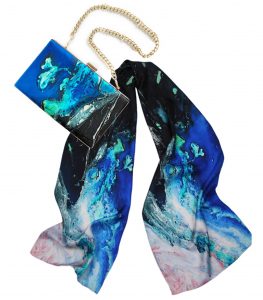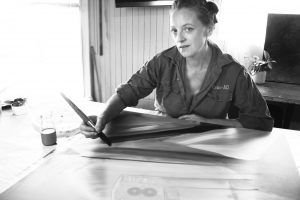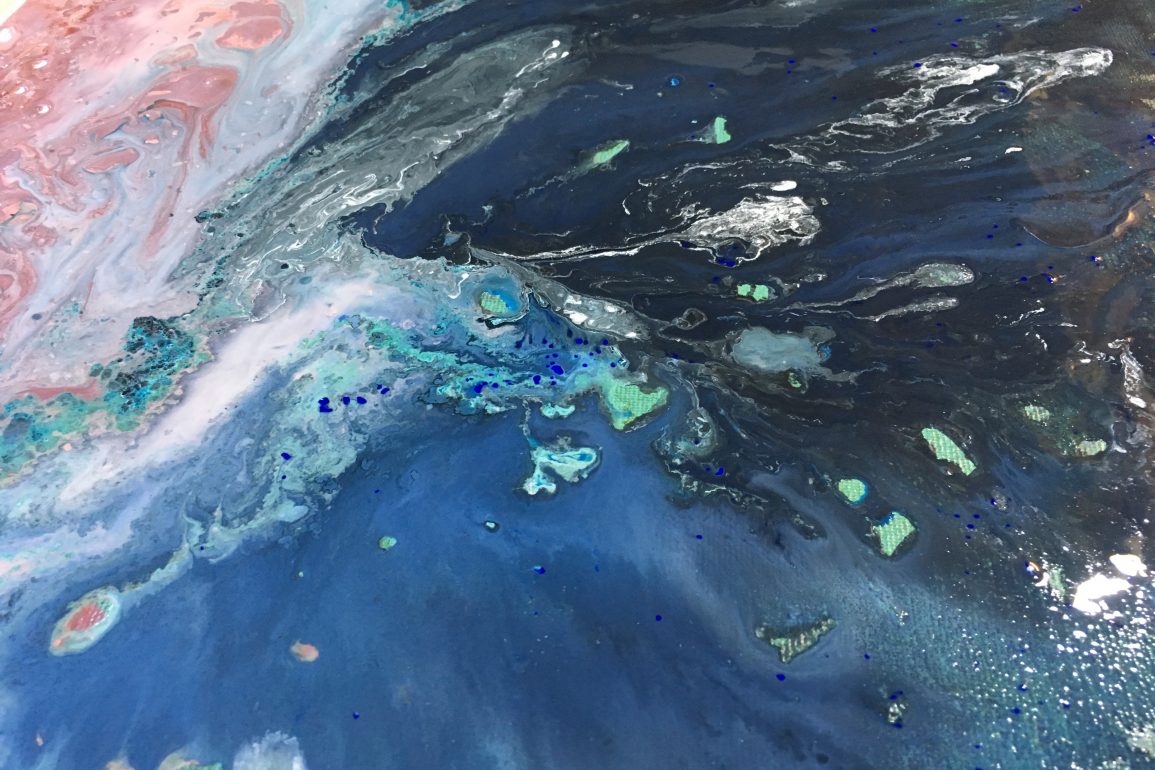Artist Captures Earth’s Unique Beauty on a Wearable Scarf – Central Victorian-based textile designer and artist, Dianne Erdmanis takes a new, zoomed-in view of Carl Sagan’s Pale Blue Dot
She has captured incredible, dreamy and realistic views of the Earth, as seen from space, on a 100% silk scarf. The beauty of the piece lies not just in the way the scarf so perfectly demonstrates a bird’s eye view of the Earth’s unique geography — it’s also hidden in the fact that it’s not a photograph.
Initially sparked by the enormity of uninspiring and mass produced scarves on the market, Di wanted to create something unique, sustainable and inspiring. Whilst staring down into the atmosphere of many trips through the clouds on planes, Ms. Erdmanis wondered if there was a way she could capture the true-to-life beauty and geography of the landscape below her.
“..the altitude had to be just right…so you could see our planet’s oceans, land, and clouds clearly,” she explained.
“The art told me a story,” confesses Ms. Erdmanis. “It made me feel like I was flying, it was beautiful.” Indeed, the Earth Scarf resembles stunning views of the Earth captured by satellites or space telescopes, watching islands blend into the waters beyond it, depths of the oceans captured by darkening paint, hypnotic swirls of pink, aquamarine, coral and teal, that show how the land bleeds into the water while skeins of “clouds” float overhead.

Her greatest discovery was that her method led to an almost photo-realistic depiction of these aerial shots — except that these could now be printed onto an elegant silk scarf.
What was a one-off exploration into abstract painting quickly mushroomed into more, with the vision coming together bit by bit, rather than all at once.
“I wanted to capture was a zoomed-out view of the Earth as seen from a dizzying, almost stratospheric height”


Ms. Erdmanis spent countless hours experimenting with paint colour, viscosity, flow, and technique. Eventually, she found a truly unique but entirely cohesive method by which to achieve the look of bodies of water “melting” into the land, and vice versa, when viewed from space.
Poppy Watt


